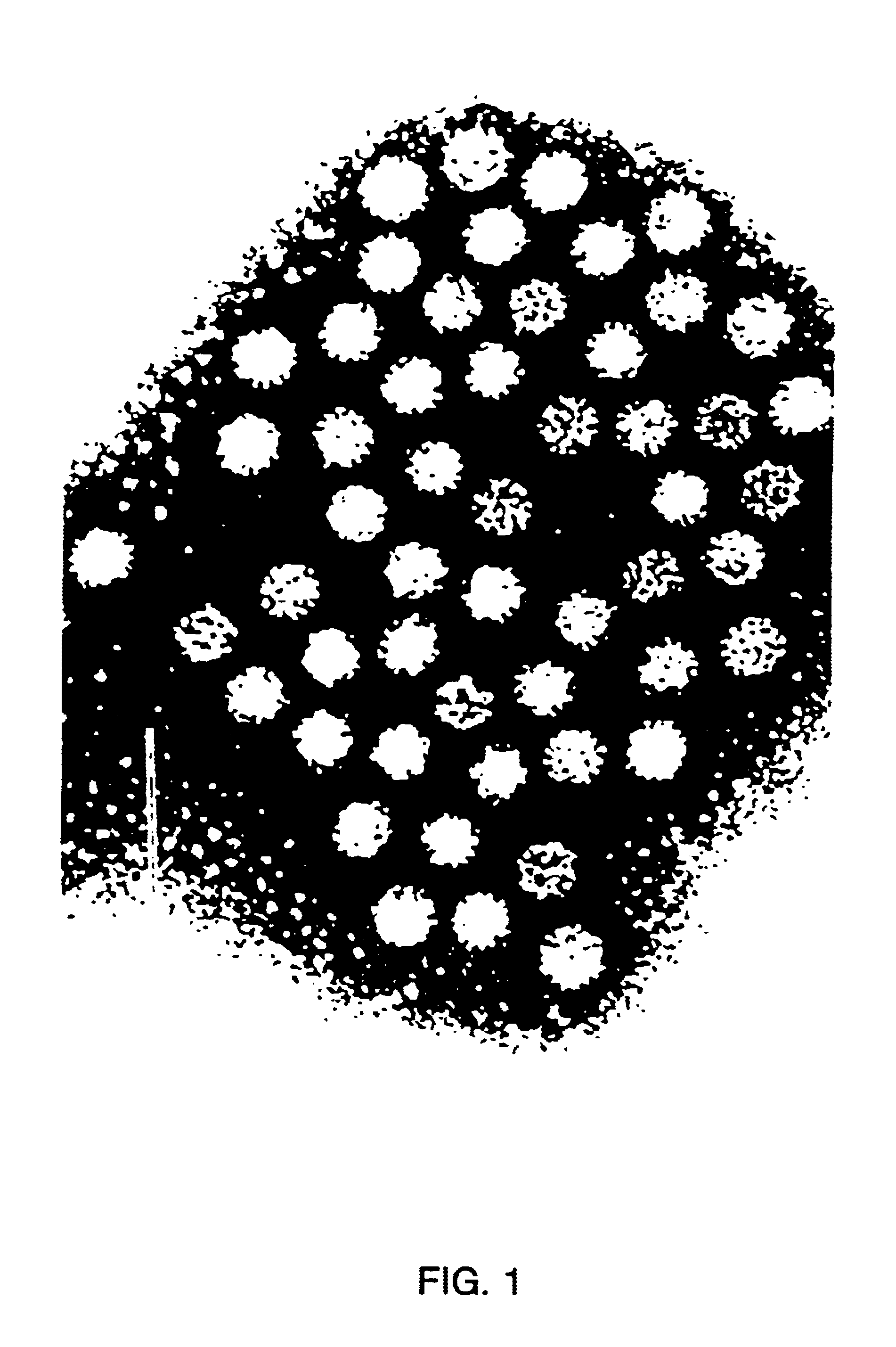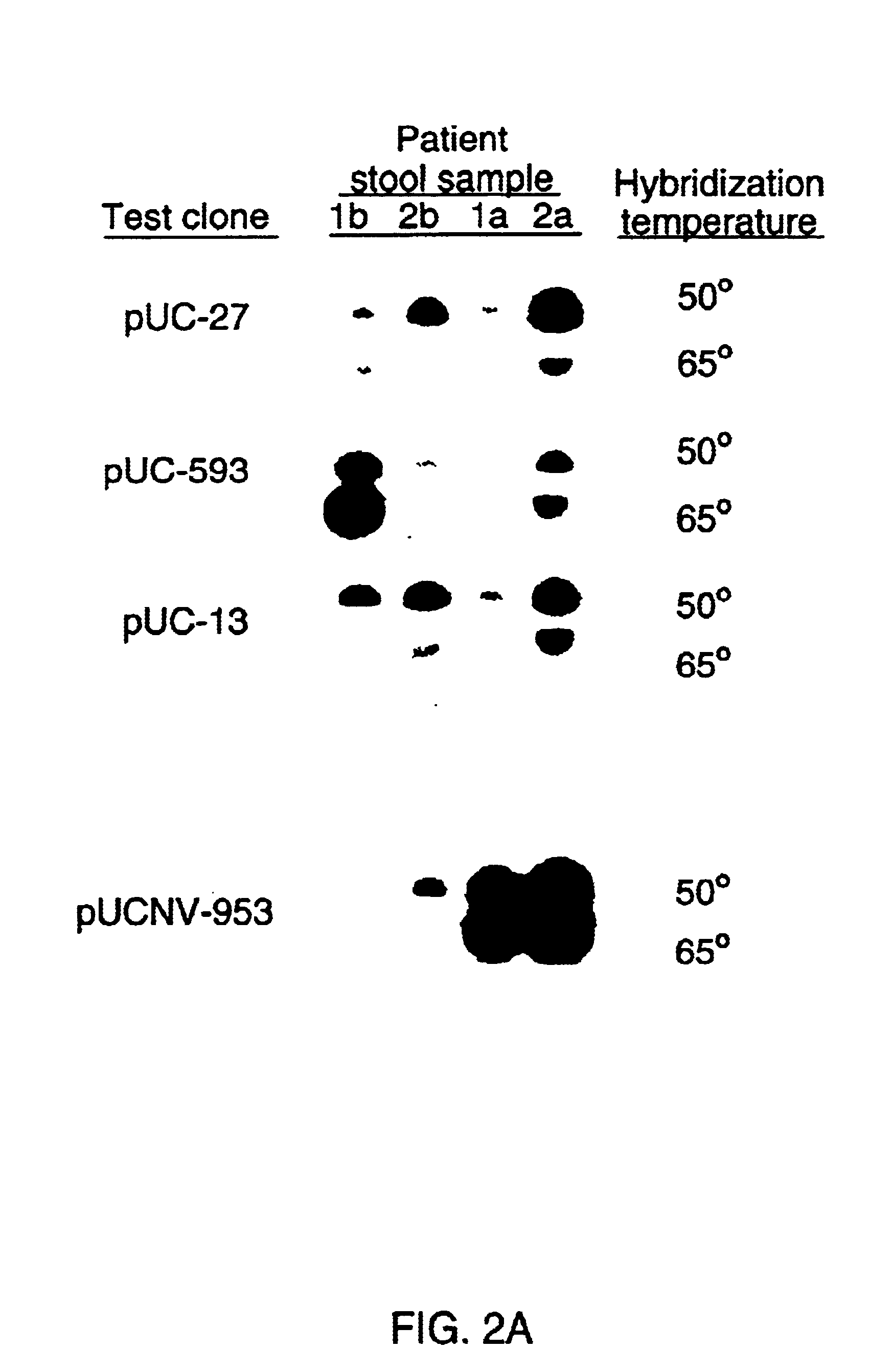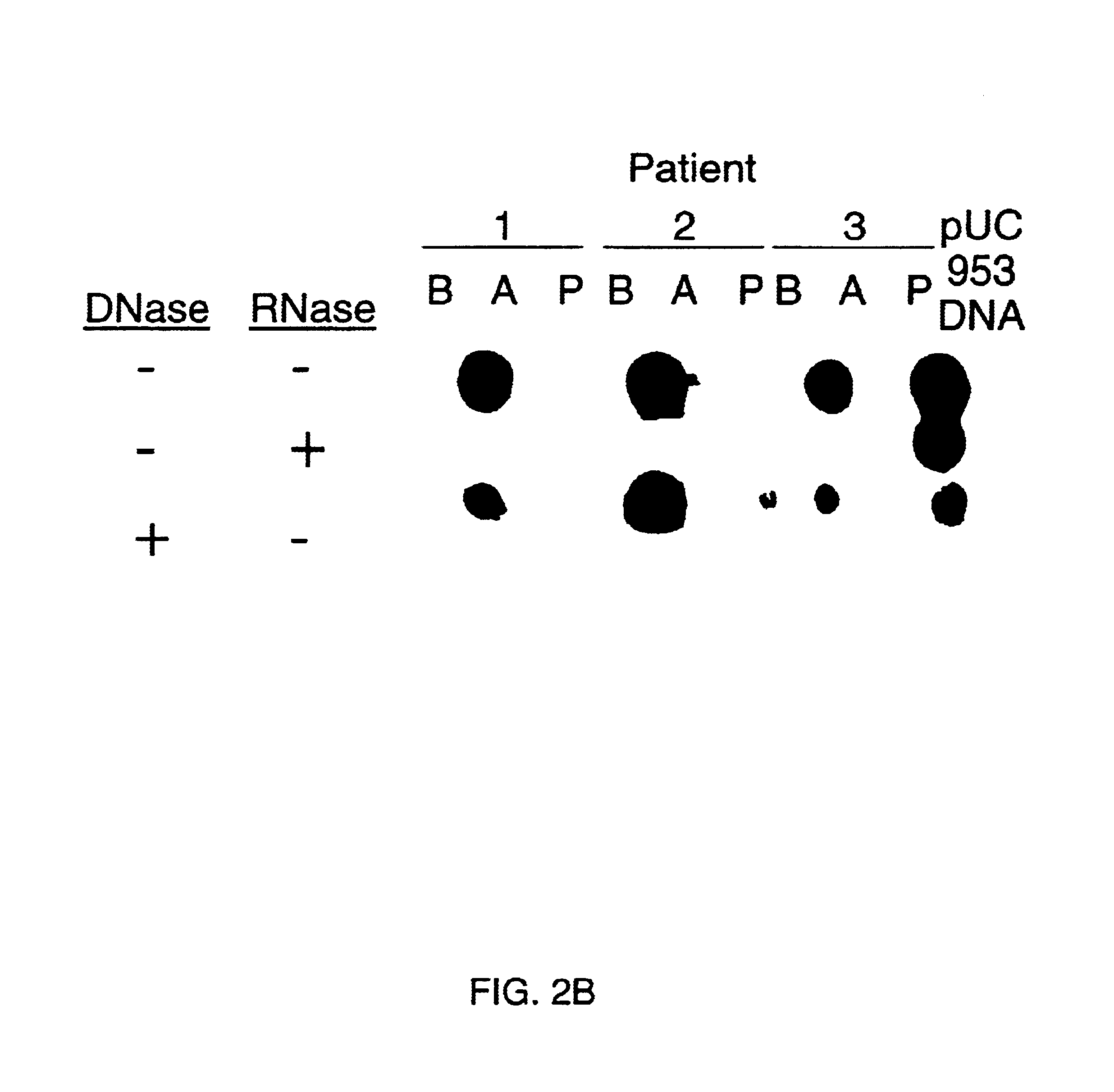Methods and reagents to detect and characterize norwalk and related viruses
a technology of applied in the field of methods and reagents to detect and characterize norwalk and related viruses, can solve the problems of low knowledge of virus prevalence, and inability to detect viruses with routine electron microscopy
- Summary
- Abstract
- Description
- Claims
- Application Information
AI Technical Summary
Benefits of technology
Problems solved by technology
Method used
Image
Examples
example 1
Electron Micrograph Confirmation
[0063]To permit better diagnosis and molecular characterization of Norwalk virus, a cDNA library was derived from nucleic acid extracted from virions purified from stool samples. Norwalk virus was purified with methods used previously for hepatitis A and rotaviruses from stool samples with some modifications (Jiang et al., 1986). Basically stool samples obtained from volunteers administered Norwalk virus were treated with Genetron to remove lipid and water insoluble materials. Virus in the aqueous phase was then pelleted through a 40% sucrose cushion. The resultant pellets were resuspended, sonicated and loaded in a CsCl gradient for isopycnic centrifugation. FIG. 1 shows an electron micrograph of purified Norwalk viruses after CsCl gradient centrifugation. Approximately 109 physical particles were obtained from 500 grams of stools when the first cDNA library was made.
example 2
Initial cDNA Synthesis, Cloning and Screening
[0064]A cDNA library was generated from nucleic acids extracted from these purified viruses by proteinase K treatment of the samples followed by phenol-chloroform extraction and ethanol precipitation (Jiang et al., 1986; 1987). Because the nature of the viral genome was unknown, the extracted nucleic acids were denatured with methylmercuric hydroxide before cDNA synthesis. Random primed cDNA was synthesized with the Gubler-Hoffman method (cDNA synthesis system plus, Amersham) and a small amount of cDNA was obtained. Direct cloning of this small amount of cDNA was unsuccessful. Therefore, a step of amplification of the DNA was performed by synthesizing more copies of the DNA with random primers and the Klenow fragment of DNA polymerase before cloning. The procedure involved cycles of denaturation, addition of random primers and the Klenow fragment of DNA polymerase, reannealing and elongation. With this procedure, a linear incorporation of...
example 3
Confirmation of Viral Origin of the Clone pUCNV-953
[0066]To further confirm the viral origin of the clone pUCNV-953, 6 more paired stool samples were tested and the same results were obtained. FIG. 2b shows a dot blot hybridization of the clone with stool samples collected at different times post-infection of the disease. Strong signals were observed only with stools from acute phase, but not before and after the illness. This result was consistent with previous RIA assays for viral antigen detection using convalescent sera from volunteers with Norwalk diarrhea and immune electron microscopy (IEM) studies of the samples for viral particle examination. This result also agrees with the patterns of virus shedding in stool in the course of the disease (Thornhill et al., 1975). When the clone was hybridized with fractions of a CsCl gradient from the Norwalk virus purification scheme, a correlation between hybridization and EM viral particle counts was observed (FIG. 3). The peaks of the ...
PUM
| Property | Measurement | Unit |
|---|---|---|
| density | aaaaa | aaaaa |
| pH | aaaaa | aaaaa |
| pH | aaaaa | aaaaa |
Abstract
Description
Claims
Application Information
 Login to View More
Login to View More - R&D
- Intellectual Property
- Life Sciences
- Materials
- Tech Scout
- Unparalleled Data Quality
- Higher Quality Content
- 60% Fewer Hallucinations
Browse by: Latest US Patents, China's latest patents, Technical Efficacy Thesaurus, Application Domain, Technology Topic, Popular Technical Reports.
© 2025 PatSnap. All rights reserved.Legal|Privacy policy|Modern Slavery Act Transparency Statement|Sitemap|About US| Contact US: help@patsnap.com



